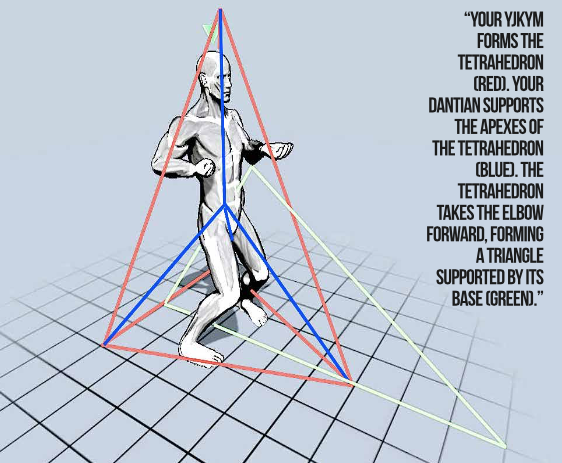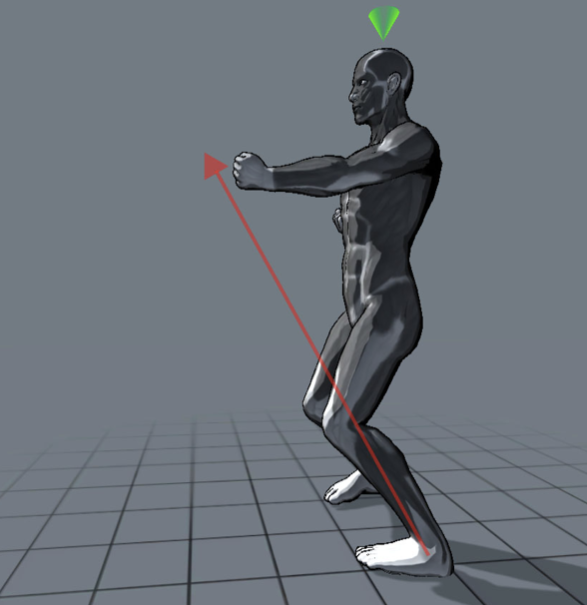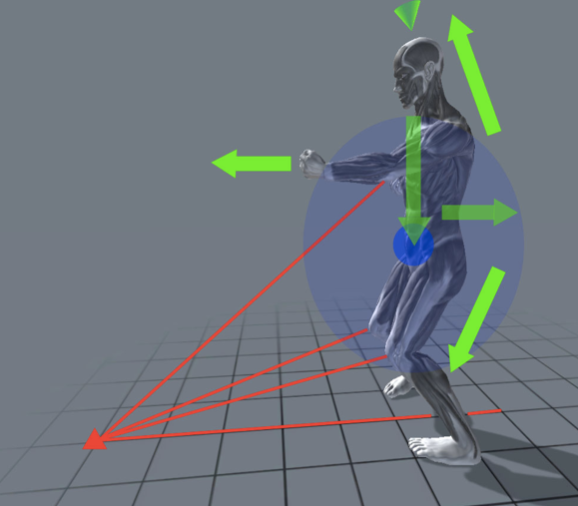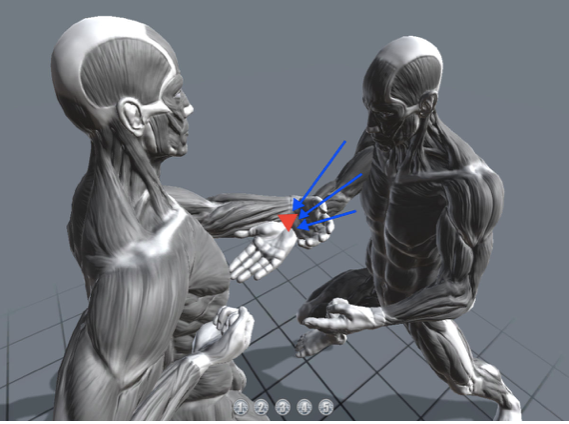“小念頭主練內功” means “Sil Lim Tau primarily cultivated Internal Kung”.
There is no Sil Lim Tau (SLT) in Kulo Wing Chun 22 Sansau (KL22). KL22 is based on 22 separate movements, rather than the more familiar Sil Lim Tau, Chum Kiu, and Biu Jee forms.
The three Wing Chun empty hand sets were passed down by the “King of Wing Chun Fist” Dr. Leung Jaan, when he was teaching in Fut Shan. After he retired and moved back to his ancestral village in Ku Lo (Gu Lao), in Hok Shan (He Shan), he started to teach his Wing Chun differently.
My suspicion is that, like many top level Masters I have encountered, Dr. Leung, at his age, had moved passed the foundation, and taught students under the assumption that they knew the fundamentals. In my opinion, no matter what style of Wing Chun you do, the SLT is still the single most important fundamental set that EVERYONE must do. It builds structure, stability, power (Internal and External) and conditions the body.
I am aware that most of the audience subscribed to Wing Chun Origins Magazine is already familiar with the SLT. However, I will share some of the less discussed aspects of this form from the perspective of KL22.
Training Your Tendons
SLT contains most of the simple, yet useful techniques you would ever need in a fight. However, the Chinese have always liked to fit lots in as little space as possible, and that includes Kung Fu forms.
“天下武功,唯快不破” means “In all the Kung Fu under the heavens, only speed is unbeatable”. In Wing Chun, speed is achieved via economy of movement. We do not utilise big swings, except as finishing moves. SLT trains us to turn our “小 Gun/Jin”, i.e., our tendon-muscular complex, to behave like high tensile steel springs. Striking power is based on the releasing of springs, and not the momentum of a swing.
The basic method is based on “屈骨伸筋” “Bending the bones (joints) and stretching the tendons (tendon- muscular complex)”, a concept used in many Internal cultivations like the 易筋經 Tendon Changing Sutra of Shaolin.
Shoulders and Associated Structures
Many of the SLT movements are generated through the shoulders and shoulder blades. The movements are exaggerated to stretch the muscles and joints.
Of course, we want to keep our elbows close to the centre-line. However, apart from the structural and protective perspective, you are also stretching the tendons from the middle of the back to the elbows.
So place some attention to the stretch every time you place your elbow close to the centre-line. Do not just put the elbow there.
The Arms
The arms are usually stretched in most of the movements. For example, in Pak Sau, we stretch out with the thumb to load the muscles. In Fook Sau, we place the thumb between the roots of the Middle andRing finger to generate a stretch in the forearm.

The Fingers
At top level, it is important to be able to conduct power all the way from the core to the finger tips and beyond. For example, after the Huen Sau, we often dart the fingers out. When you do this, you must feel the stretch of the fingers, even when you do it slowly. In Tan Sau, feel the stretch all the way from the middle of the back to the tip of the Middle finger.
Whole Body
The 二字拑陽馬 Yi Ji Kim Yeung Ma (YJKYM) is a training stance. The YJKYM conducts a stretch all the way from the heels, to the hips, through the back, pass the shoulders and into your hands. Feel the stretch and the power-lines in such structures.
The 二字拑陽馬 Yi Ji Kim Yeung Ma (YJKYM)
In my opinion, there is no Wing Chun without the 二字拑陽馬 Yi Ji Kim Yeung Ma, even though there is a lot of confusion regarding this stance. Some of the top level masters no longer emphasise training of the YJKYM, but I believe this is partly because they are at such levels that the YJKYM is internalised.
You should not train the muscles by “squeezing” the knees, unless you want knee replacements at age 45. Whether you keep your toes pointed in, or more parallel, is not really the issue (of course make sure you don’t overturn your toes). The issue is the “拑陽 Kim Yeung” .

I was taught that we should “拑陽 Clamp the Yang” and not “ 拑羊 Clamp the Goat” which is pronounced exactly the same in Cantonese. So one of the most fundamental methods about the 二字拑陽馬 is in keeping the power source within the hip-thigh apparatus, i.e. the whole Dan Tian region.
The Basic Tripod Structure
The line between your heels forms the base of the triangle, while the toes (or the intention of the toes) points towards the opponent’s centre-line, thus forming a triangle. Your knees point towards this point while sinking towards it. Even though we have only two feet, dynamically, your feet are free to move to cover each of the three points of this triangle, forming a dynamic tripod.
The triangle on the ground is projected upwards forming a Tetrahedron, with your arms forming the protected surfaces of the tetrahedron.
Moving with the YJKYM
In a fight you are not going the stand in a rigid structure, waiting to be smashed. You must move around. As you move, you are using the Clamped Yang as you power support and your central stability. It is like moving your whole tetrahedron by shifting or rotating your power centre.
Drilling
You can deliver extra stability and crushing power by imagining your YJKYM as a tripod with a weight hanging down from the vortex. By extending the centre weight and drilling it into the ground, you can rotate your whole structure, spiraling downwards, crushing your opponent.
本固任從枝葉動 The branches and leaves are free to move, while the trunk remains stable.
Late GM Ip Man was famous for his immovable stance. As we all have only two feet, our stance will always be unstable comparing to other structures with four legs, such as a table or a car.
The only way to fight against an incoming ever changing force is NOT by pushing back, but by being even more unstable than the opponent. Therefore, try to keep your core upright like a tree trunk, while the peripheries are free to move. Much like leaves and branches on a tree.
When you can do this well, there will be no stress on your stance, no matter how hard the opponent is applying his force. Your stance will become immovable.
The Strikes
For the purpose of our discussion, we will use the centre-line punch as an example. Most of the other strikes follow very similar principles.
The Basic but very limited Biomechanics being taught to Beginners : This red power line is often taught in schools for beginners. While it is not incorrect, application is very limited and difficult to generate damaging power with it.

It is slow, and the type of power generated is more pushing than striking. It also relies on ideal conditions and is difficult to pull off effectively in the chaos of combat.
Remember, while the “push” is a valuable tool if you want to disrupt the opponent’s balance and create weaknesses in his structure, it is not going to cause great damage to the opponent. So what are some of the tools to increase striking power?
Dantian Breathing
When you prepare for the strike, breathe in, fill your body with your breath. When you breathe out, breathe into the Dantian. You will notice your core muscles consolidate naturally, forming support for your strikes.
Your centre of gravity drops slightly, and engages with your fist. Your shoulder blades also move forward, engaging the bigger muscles of the shoulder apparatus, which can generate more power than your triceps alone.
Loading and Releasing
The punch is not based on pushing the fist out. It requires storing then releasing, much like flicking a finger.
Start from your fist pulled back. Next, DO NOT place your fist in the centre-line; merely drop the elbow and the shoulder blade, and your fist will naturally end up on the centre-line, while being supported by your entire body and CoG.
Next, breathe out into the Dantian. Use this to power the body and fire the fist out like a cannon. Time it properly to achieve the ideal result.
Your knees and elbows “sink” into the opponent to crush his structure. You breathe your power into the Dantian causing the power to expand, driving the (green) arrows, firing the fist out.

Coupling with the YJKYM.
While in your YJKYM, there exists and imaginary line elongated towards your target. The structure of the hips, feet and knees assists in supporting this line. Your punch should be guided by this line, much like a laser guiding system.
The Slow Tan Wu Fook
The slow section of the SLT is very powerful. Unfortunately, it is also one of the least understood sections.
There are a number of purposes to this slow section:
1. Developing Tseng Ging (Zheng Jin) 整勁,, integrated power.
Integrated power means the entire function of the body must be unified and integrated. When you execute the Slow Tan, for example, you are training to move your hand forward without breakage to this integration.
Every time you feel a muscle activating on its own, you are creating a breakage to the power flow. When you train, you have to pay attention to every part of the body, eliminating all rash movements. The slightest twitch of a muscle as you move forward, and you will have to shut it down.
Therefore, you are actually not trying to move slowly; but when you have to move without any rash movements and without any non- integrated activation of muscles, you simply cannot move fast.
Of course, in a fight, you have to move fast. But with prolonged training, your body will still retain some of the integrated power. Your arms will feel heavy as you strike.
Developing Hei Sai (Qi Shi) 氣勢
A direct translation would be your “Chi (Qi) Structure”. But I prefer to describe it as developing your mindset. Wing Chun is a very aggressive style. You get in, you take over, and you smash your opponent to pieces.
To train this, you have to draw power into your Dantian, then imagine this power expanding outside the body. So before you even contact your opponent, your Hei Sai has already taken him over.
The interesting thing is, human beings (and animals) are very good at picking up the opponent’s intentions; and if your Hei Sai is strong, you have won much of the battle already.
When you do the Wu Sau, you are drawing in, and your Hei Sai grows bigger. When you are doing the Fook Sau, you are projecting the Hei Sai into the opponent.
Developing Sensitivity
Your Listening Skills do not come just from your hands/wrists/arms. They come from your entire being.
When you pay attention to the body, you will sense the changes in pressure, the loading in your joints, and the shift in CoG. When you are linked with your opponent through sticking, your body will sense all the combined changes. When it becomes instinctive, you do not need to search for it. Your body will react automatically. This slow section gives you an opportunity to develop your sensitivity.
Developing Sticking/Nailing
There is no Wing Chun without sticking. The Wing Chun fighting methods share many traits with Boxing, but we do not punch and pull back.
We take over, we smash, we annihilate, while remaining stuck to our opponents. At a high level, the opponent feels as if his arms are nailed to our hands/wrists, and he cannot escape.
The Wu Sau, is not about blocking the opponent; it is about drawing the opponent’s power out and not letting him escape.
The Tan Sau is not about jabbing the opponent, nor blocking the opponent. Utilising the Tan Sau, you take over the opponent’s bridge, locking him up.
The Fook Sau takes a lifetime to master. There is no blocking of the opponent, no grabbing and no pushing back. Fook means “subdue”. With your Fook Sau, you capture and subdue your opponent’s bridge, completely removing his ability to attack.
The Fook Sau literally sticks to and nails down the opponent’s bridge at contact point (red triangle) while drawing away his power (blue lines), immobilizing the opponent’s attack.

We are merely scratching the surface here. To master these skills, you need a knowledgeable and skilled teacher, and total dedication on your part.
But it is a worthwhile endeavor, no matter what style of Wing Chun you do. Ω


7 Comments
Excellent information
A great article. Is this taken from your books?
I would like to thnkx for the efforts you have put in writing this blog. I am hoping the same high-grade blog post from you in the upcoming as well. In fact your creative writing abilities has inspired me to get my own blog now. Really the blogging is spreading its wings quickly. Your write up is a good example of it.
Very simple but effective the economy of movement.
Howdy! I just would like to give an enormous thumbs up for the good info you’ve here on this post. I might be coming back to your weblog for extra soon.
Such great website
Amazing blog thanks for sharing today on this blog
muito bom. como consigo estes estudos traduzidos para o português. Meu idioma.